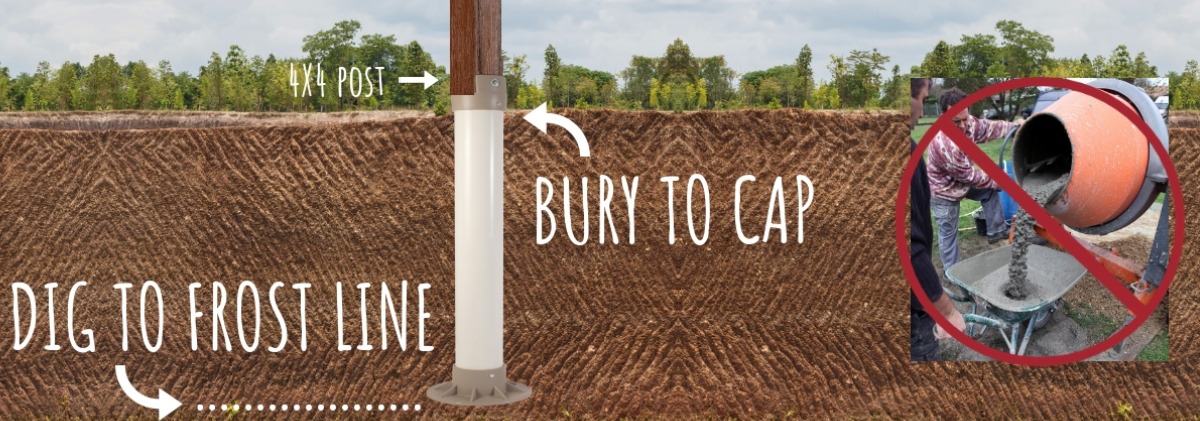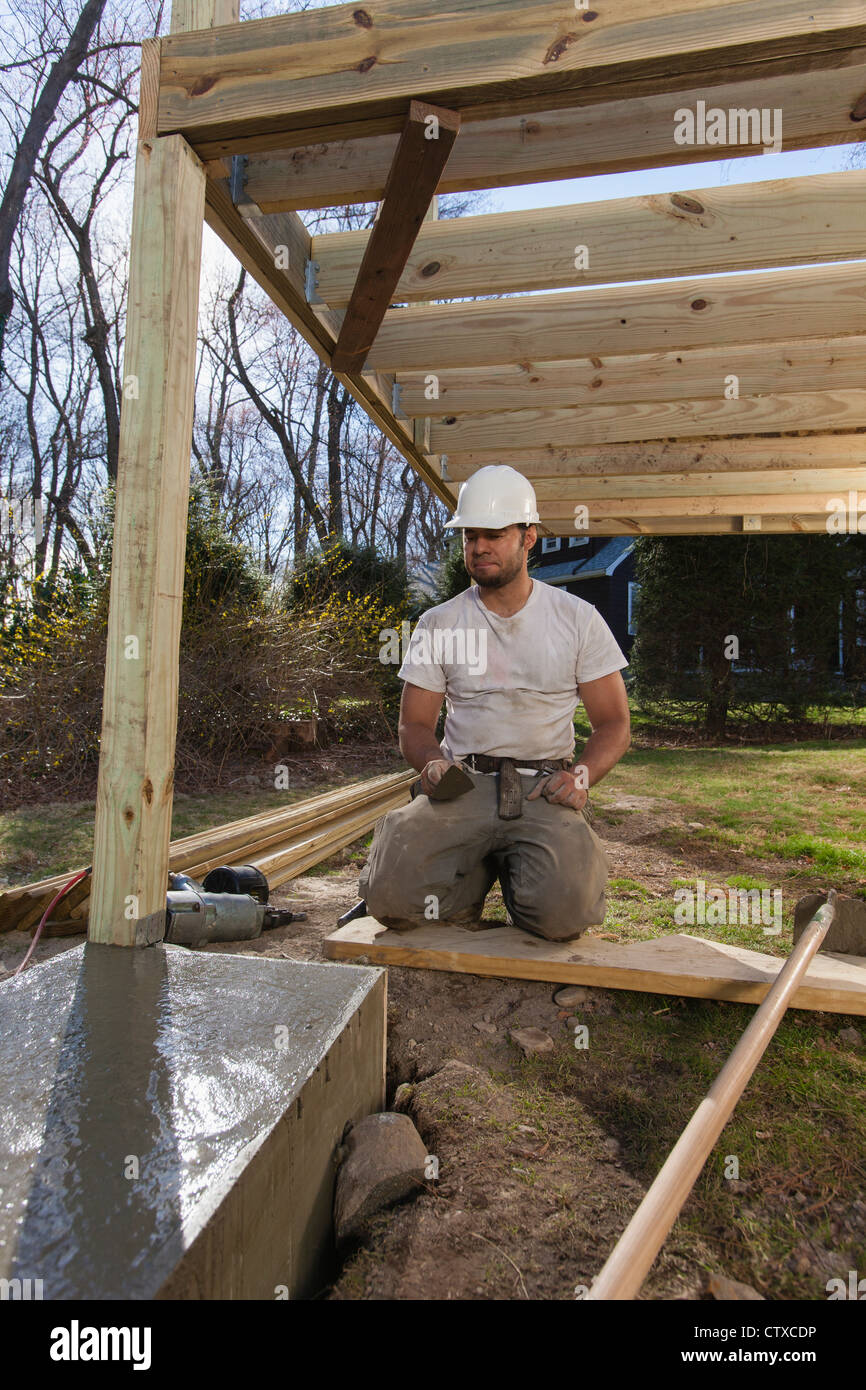From Idea to Concrete: The Important Role of Deck Footings in Sturdy and Safe Decks
From Idea to Concrete: The Important Role of Deck Footings in Sturdy and Safe Decks
Blog Article
Make The Most Of the Life Expectancy of Your Deck With Solid and reputable Grounds
In order to totally maximize the life-span of your deck, it is important to make sure that it is constructed on trusted and solid grounds. These grounds develop the foundation of your deck, supplying security and assistance, and are often the difference between a deck that lasts for years and one that calls for consistent fixings. In this discussion, we will check out the value of dependable footings, the different types of strong footing products, appropriate installation methods, and how to preserve and inspect your deck's footings to prevent damages.
Value of Trustworthy Footings
The significance of reputable grounds can not be overstated when it concerns making the most of the lifespan of your deck. The grounds offer as the structure upon which the entire structure rests, giving stability and assistance. Without a solid footing, the deck is at risk to changing, sinking, and even collapse, which can significantly decrease its life expectancy and posture safety dangers.

Choosing the appropriate kind of ground is also vital. The most usual kinds consist of concrete footings, helical piers, and sonotubes. Elements such as soil problems, climate, and the dimension of the deck will figure out one of the most ideal choice. Employing an expert to evaluate the soil, design the grounds, and ensure proper installment is highly advised.
Purchasing reliable footings might include extra cost and initiative upfront, yet it is a rewarding investment that will add to the lasting durability and security of your deck. By making sure a solid foundation, you can appreciate your deck for several years to find, understanding that it is developed to endure the examination of time.
Kinds Of Strong Ground Products
To guarantee the security and longevity of your deck, it is important to think about the various kinds of solid footing materials offered. The selection of footing material is critical as it provides the needed support and stability to stand up to the weight and load of the deck structure.
One reliable and typical material made use of for deck footings is concrete. Concrete grounds are resilient and supply exceptional security.
For locations with inadequate soil conditions, such as loose or extensive dirts, a footing system that makes use of steel or composite piers may be favored. Deck Footings. These piers are driven deep into the ground to get to stable soil layers, ensuring the security of the deck
In many cases, deck footings can also be created making use of cured lumber. It is important to guarantee that the lumber is properly dealt with to stand up to rot and decay triggered by exposure to wetness and pests.
When selecting a ground product for your deck, it is important to think about aspects such as dirt conditions, climate, and regional building regulations. Consulting with an expert service provider or structural designer can help figure out one of the most appropriate footing product for your specific deck task.
Proper Installment Techniques for Footings
Thinking about the significance of making certain security and sturdiness for your deck, it is vital to comprehend the proper installment techniques for footings. The success of your deck project counts heavily on the honesty of its foundation, which is why adhering to the appropriate installation techniques is crucial.
Most importantly, it is essential to identify the ideal dimension and depth of the footings based on the design and lots needs of your deck. This details can be gotten from developing codes or with consultation with a structural engineer. As a basic rule, grounds ought to be at the very least 12 inches in size and extend below the frost line to stop working out or shifting.
As soon as the dimensions are established, the following action is excavation. Digging the openings for the grounds must be done with precision, making certain they are deep enough and have a degree bottom. Deck Footings. This will supply a secure base for the footings
To additionally boost the stability of the grounds, it is advised to use a concrete blend with a stamina of at the very least 3,000 psi. This will certainly guarantee the footings can stand up to the weight and pressures applied by the deck.
During setup, it is very important to keep the grounds degree and lined up correctly. This can be accomplished by using straight from the source a degree and string lines to additional hints lead the placement of each footing.
Maintaining and Inspecting Your Deck's Footings
Normal upkeep and thorough examinations are important for making sure the long-term security and safety of your deck's grounds. Over time, footings can catch deterioration, weather, and dirt activity, which can endanger their structural honesty. To make best use of the life expectancy of your deck's footings, it is vital to carry out a regular maintenance routine and carry out extensive assessments.

Additionally, it is important to check grounds for any type of indicators of damages or wear and tear. This includes checking for fractures, splits, or falling apart concrete, along with any kind of signs of motion or negotiation. Any kind of problems should be addressed without delay to avoid further damage and ensure the security of the deck.
Furthermore, it is advised to evaluate the bordering soil for any type of signs of disintegration or changing. Soil activity can impact the security of the grounds, so it is important to address any soil-related problems quickly.
Signs of Footing Damage and Just How to Address Them
One more indicator of footing damage is breaking or falling apart of the concrete footings. If you observe any type of splits or damage in the grounds, it is vital to have them evaluated and repaired by an expert. Bear Continued in mind, dealing with footing damages promptly can aid ensure the long-term stability and security of your deck.
Conclusion
In final thought, guaranteeing the integrity and toughness of grounds is vital for taking full advantage of the life-span of your deck. By utilizing strong footing materials and effectively mounting them, you can prevent damage and preserve the stability of your deck.
These footings form the foundation of your deck, providing stability and assistance, and are typically the difference between a deck that lasts for decades and one that requires continuous repair services. In this discussion, we will certainly check out the importance of dependable grounds, the various types of strong footing products, proper installment methods, and how to preserve and evaluate your deck's footings to protect against damages.Regular upkeep and thorough assessments are necessary for making sure the long-lasting stability and safety and security of your deck's footings. Remember, addressing ground damage immediately can assist guarantee the long-term security and safety and security of your deck.
By utilizing strong ground products and correctly installing them, you can protect against damages and maintain the stability of your deck.
Report this page